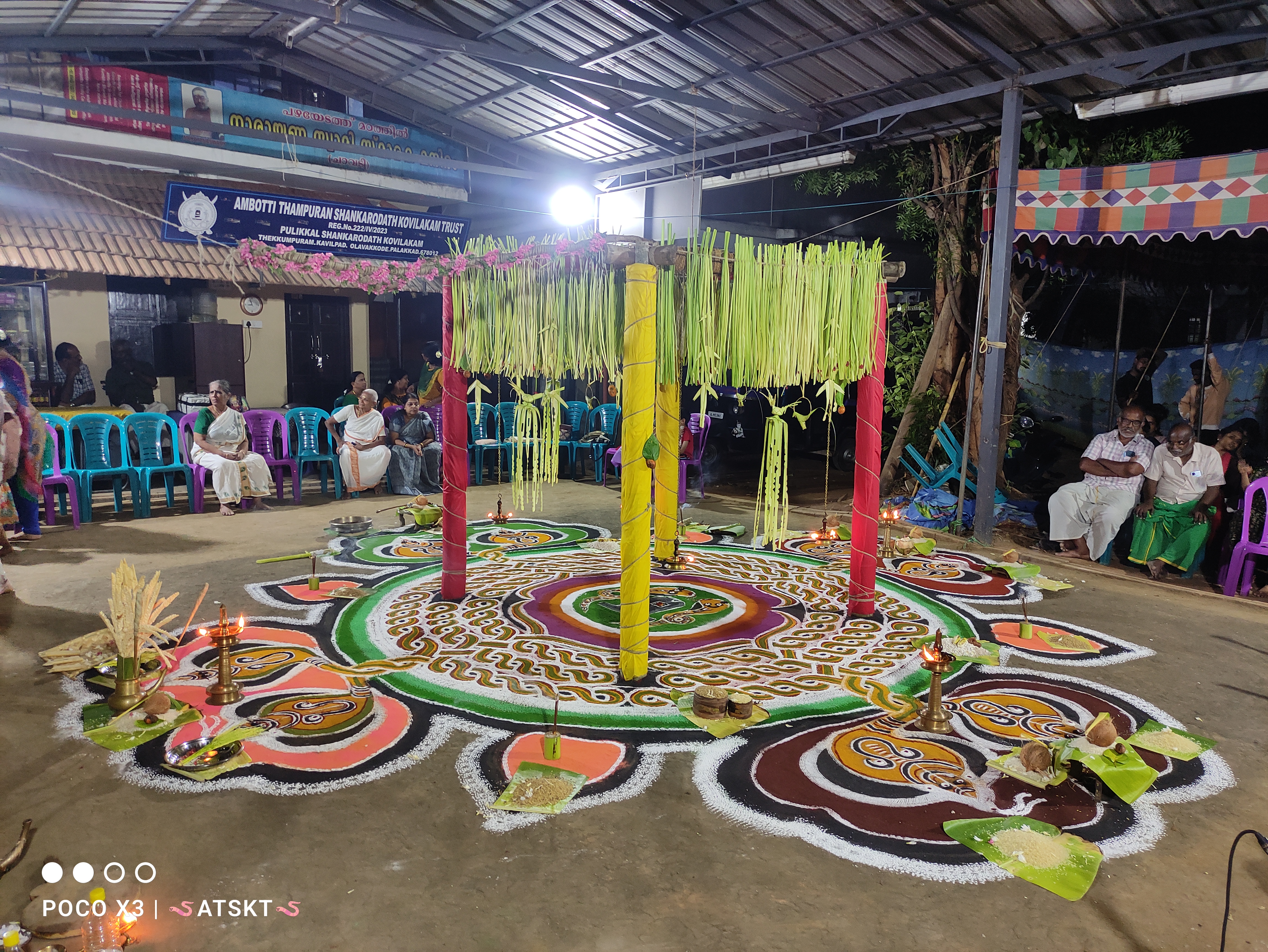Kaala Sarpabali
Krishna Parandhama granted moksha (liberation) to the Kaalinga Sarpa and was bestowed with the boon of sanjaram (to journey) across planet Earth wishfully and limitlessly. A Sarpa belonging to such vamsa (lineage) is called the Kaala Sarpa. As commanding rulers of the Kaala Sarpas, Rahu and Ketu voyage throughout Earth grimly.
Due to past life karmas, disadvantageous change in planetary alignment as an outcome of the continual transition of planets and eclipses, malefic position of planets, or when all planets are situated in-between Rahu and Ketu in one’s horoscope, that individual suffers from Kaala Sarpa Dosha.
Performing Kaala Sarpabali serves as the remedial solution for Kaala Sarpa Dosha.

Sarpabali
The Sarpa Yagam and Brahmasthraprayogam caused great havoc in the Naga Loka. As an outcome of the mayhem, Sarpa Saabham was placed upon planet Earth. For tranquility from the adverse effects of the curse, Lord Parashurama summoned the souls of the dead Sarpas with thaala vaadhya layas and conducted several poojas and bali tharpana. Hence, this ritualistic process obtained the name Sarpabali.
If one is suffering from Ancestral curses, Sarpa-Hathya curse or Sarpa Dosha induced physical ailments, doing the Sarpabali pooja as pariharam (remedial oblation) will give emancipation.
Payasa Bali
Having partaken in the practice of worshiping Serpent deities customarily for generations and due to various reasons or unforeseen timely turn of events the aaradhana is discontinued, Naga Dosha will prevail in the family.
For certain individuals, Rahu and Ketu are positioned in a malefic manner in their natal chart (horoscope).
For relief from Naga Dosha and unfavourable placement of Rahu or Ketu, Payasa Bali is done as pariharam (remedial oblation) during the pooja on the auspicious day of Ayilyam Nakshatra.

Noorum Paalum
As a consequence of the Janamejaya Yagam, the Nagas were left wounded with their bodies seared. For the mental wellbeing, physical recovery and to ward off the sins of the distressed Nagas, Lord Parashurama commenced the practice of Noorum Paalum.
For individuals suffering from Naga Dosha caused either deliberately or accidentally, performing Noorum Paalum will help alleviate its negative effects.
Payasa Homam
To seek Shesha Naga’s blessings, prosper with wealth, for sound health, progeny (children), overall wellbeing and for a family to flourish for generations to come, Deva Nagas are invoked and worshipped with a fire sacrifice (homam). This ritual is called Payasa Homam.


Pirannal Puja
A special puja performed on your birthday by adorning goddess Vishwanagayakshi amma with her sacred and auspicious ornaments. On your birthday the sacred ornaments (Thiruvabharanam) of Vishwanagayakshi amma will be handed over to you by the Chief Priest and after circumbulating (pradhakshinam) thrice around the sanctum sanctorum with utmost prayer and devotion, the Thiruvabharanam will be taken back by the Chief priest for Alankara Mahadeeparadhana.
Sarvaishwarya Karyasiddhi Puja
Sarvaishwarya Karyasiddhi Puja is now being done at Pulikkal Shankarodath Kavu in the divine sanctum sanctorum of Shankarodath Amma for the well being of devotees. This puja will be held on all Malayalam Sankrama days (first day of every Malayalam month).
Puja includes Panchadravya Abhishekam (Abhishekam done with milk, tender coconut, curd, rose water and vermillion), Sarvalankara puja and Mahadeeparadhana for Shankarodath amma.
For those devotees who come in person, a Kalash will be given and will be asked to pray with the Kalash in their hand before offering it at the sanctum. They can sit close to the Thiru Nada and watch the abhishekam in proximity..


Kalamezhuthu Paattu - Sarpam Thullal
Sarpam Thullal is performed to please snake gods for the prosperity and progeny of the family as well as to ward off any obstacles in one's destiny or horoscope.
Vettekaran Kalam Paattu
Vettekaran Kalam Paattu is perfomed for pleasing Vettekarappan and peace of mind.


Bhagavathy Kalamezhuthu Paattu
Bhagavathy Kalamezhuthu Paattu is performed for pleasing ancestral gods and leads to prosperity of the family clan.